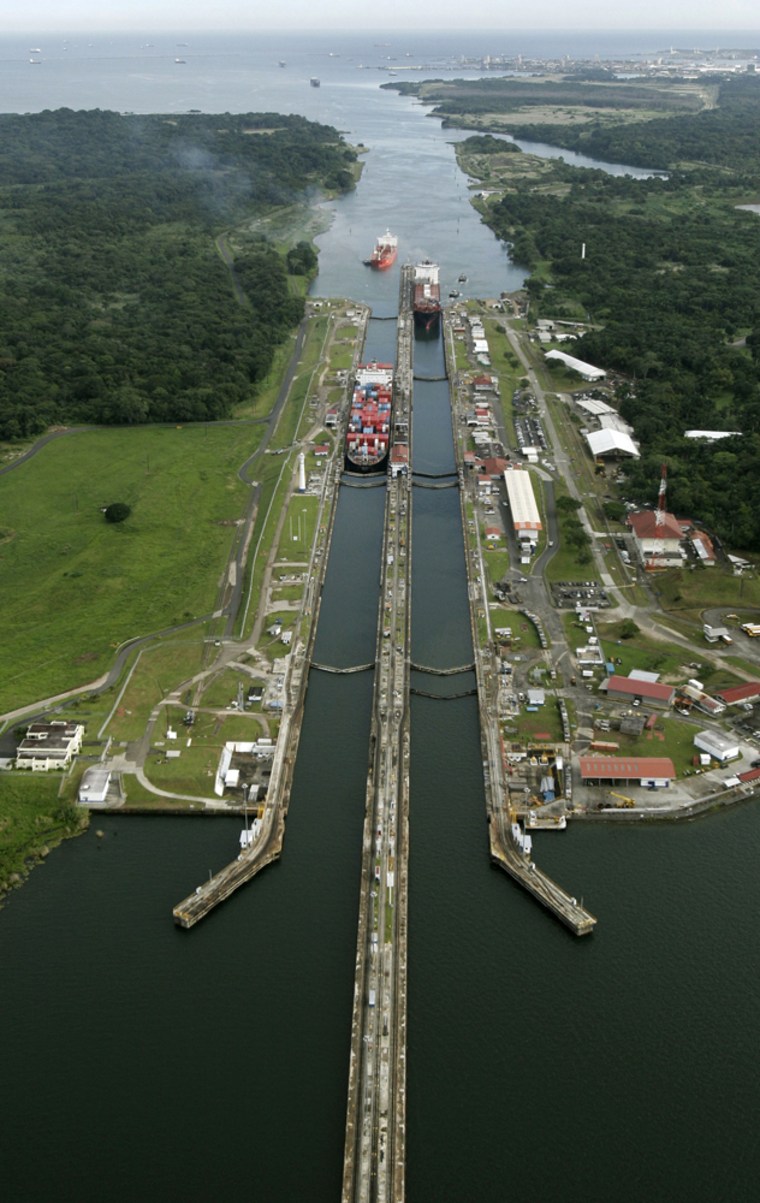Voters overwhelmingly approved the largest modernization plan in the 92-year history of the Panama Canal on Sunday, backing a multi-billion dollar expansion that will allow the world’s largest ships to squeeze through the shortcut between the seas.
More than 78 percent of Panamanians voted in favor of the expansion with 94 percent of polling stations counted by the country’s electoral tribunal. Only about 22 percent opposed the plan. Almost 57 percent of the country’s more than 2.1 million voters did not turn out.
Thousands of supporters in green “Yes” T-shirts cast ballots endorsing the $5.25 billion overhaul which would allow the canal to handle modern container ships, cruise liners and tankers that are too large for its current 108-foot-wide locks. The plan is to build a third set of locks on the Pacific and Atlantic ends by 2015.
The Panama Canal Authority, the autonomous government agency that runs the canal, says the project will double capacity of a waterway already on pace to generate about $1.4 billion this year. Expansion will be paid for by increasing tolls and take in more than $6 billion annually in revenue by 2025.
“We are going to serve the world better and that means we are going to serve Panama better,” canal administrator Alberto Aleman Zubieta told The Associated Press. “Everyone’s a winner. The shipping industry, the Panamanians and all of the countries that will benefit from international shipping commerce.”
Close watch on corruption
A large chunk of canal revenues go to education and other Panamanian social programs. Still, critics contend that as drawn up, the expansion plan benefits the canal’s customers more than Panamanians, and worry that costs could balloon for this debt-ridden country.
“Voting ’no’ is like closing the door on the canal. It’s the top source of income for Panama and improving it means more money for the government and less poverty,” said Leonardo Aspira, a boat salesman who sported a “Yes” shirt and baseball hat in Kuna Nega, a largely Indian town of dirt roads and banana trees on the outskirts of Panama City.
The canal employs 8,000 workers and the expansion is expected to generate as many as 40,000 construction jobs. Unemployment in Panama is 9.5 percent, and 40 percent of the country lives in poverty.
Critics contend the expansion will benefit the canal’s customers more than Panamanians, and fear it will stoke corruption and uncontrolled debt if costs balloon.
“The expansion is necessary, but we all have to watch closely, make sure there isn’t embezzlement and corruption,” said Igor Meneses, a 34-year-old advertising executive who was waiting to vote in Panama City. “With that kind of money, there’s a lot to steal.”
President Martin Torrijos, an outspoken supporter of expansion, called the referendum “probably the most important decision of this generation,” after voting.
Opponents of the expansion plan complained about electoral foul play.
On the sweltering streets of Panama City, some wore red shirts and smocks supporting a ’No’ vote. But they were far outnumbered by those in shirts, bandanas, caps and vests supporting expansion. Cars and trucks with “Yes” bumper stickers and flags jammed streets.
Voting complaints
Former President Guillermo Endara, who dressed in red from head to toe to show his opposition to expansion, complained that polling place workers wore “Yes” clothing and handed out cards with directions on where and how to vote with propaganda supporting the plan printed on the opposite side.
“That’s vote-buying,” Endara said.
School buses and vans with “yes” signs stuck to the side were also seen whisking voters from poor, crowded neighborhoods to polling places to vote.
But polling place and transportation workers showing which side of the referendum they were on apparently did not constitute a violation of Panama’s electoral laws.
The United States arranged for Panamanian independence from Colombia to build the canal, and ran the canal from 1914 to 1999. Torrijos’ father, strongman Omar Torrijos, signed a treaty with President Carter in 1977 to cede control of the waterway back to Panama, a decision that also was approved by Panamanians in a referendum.
